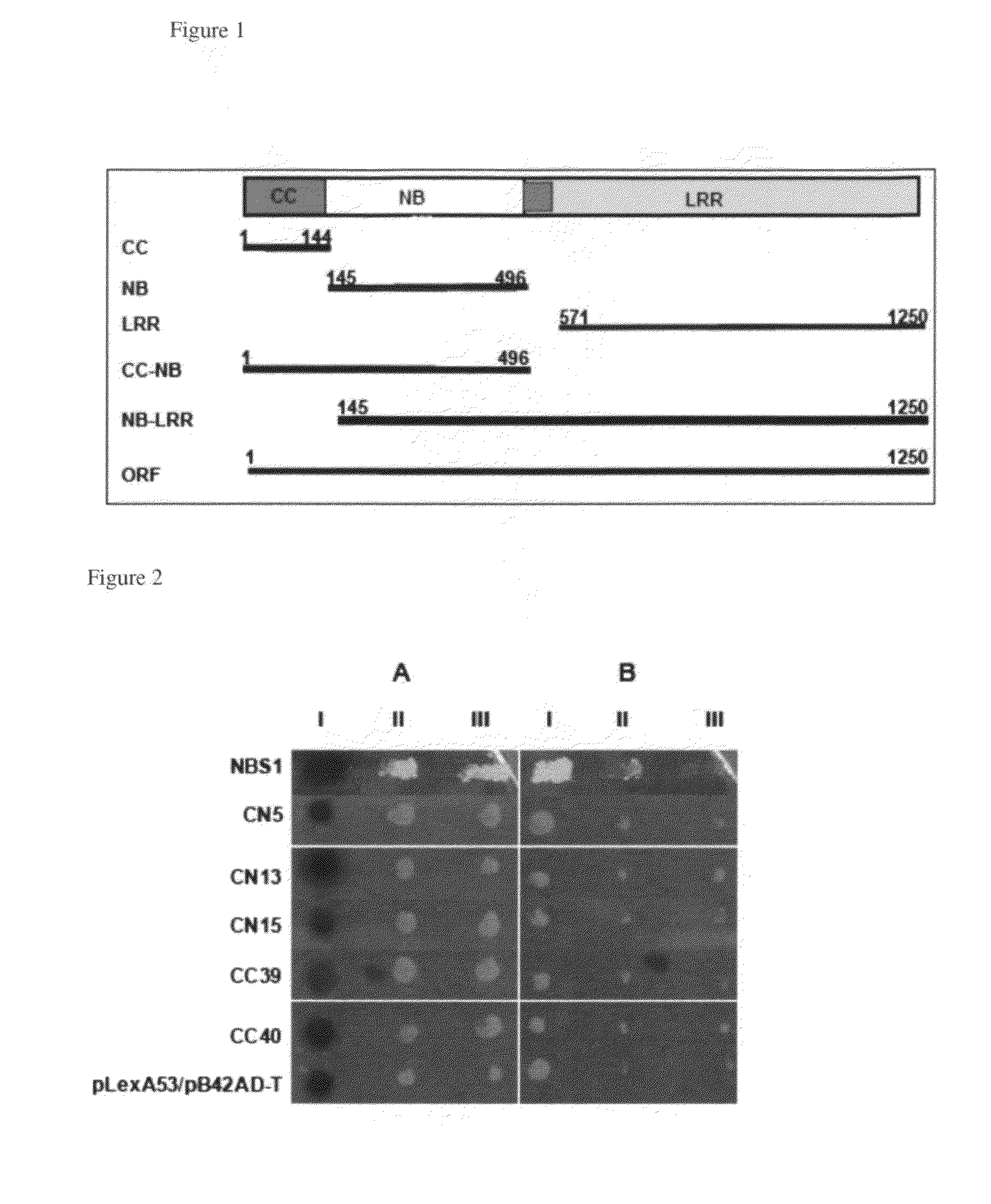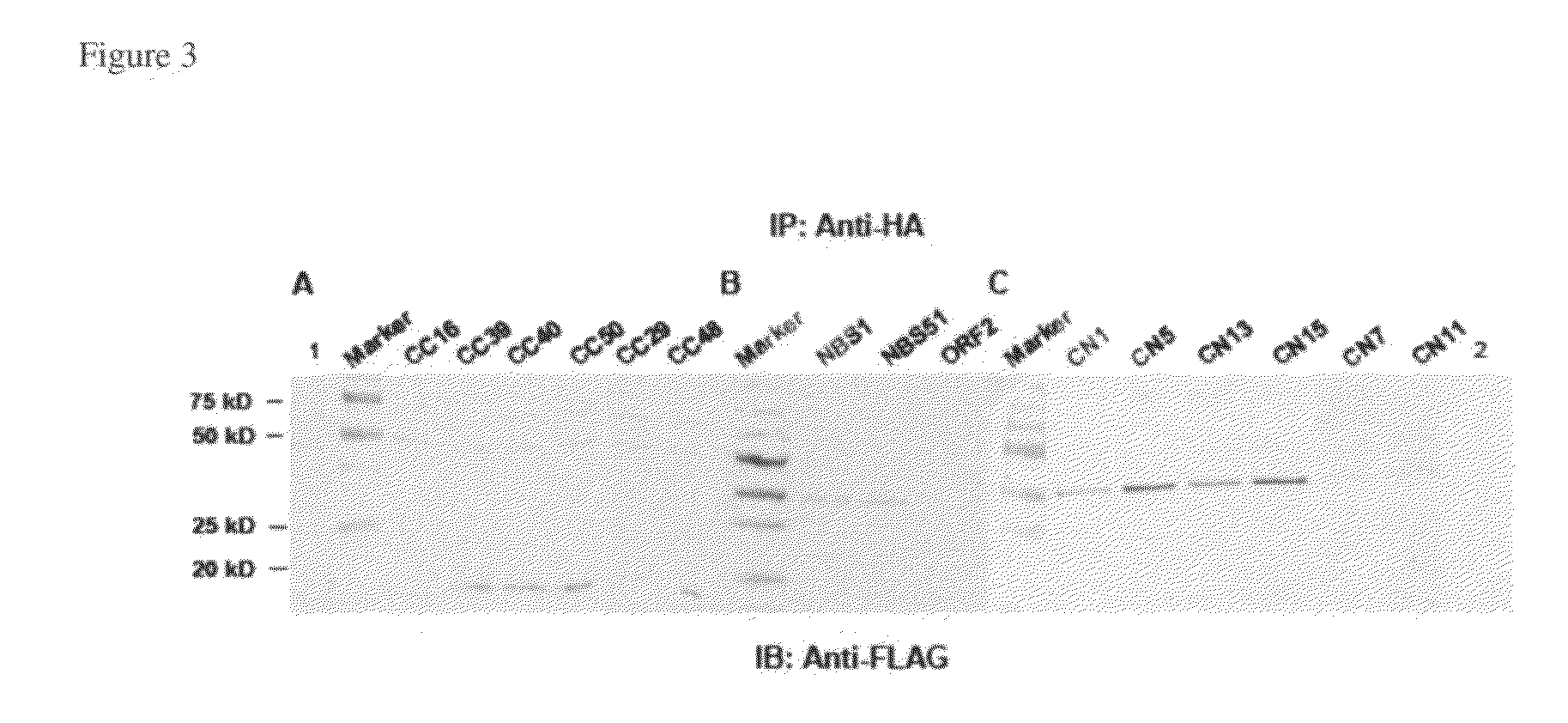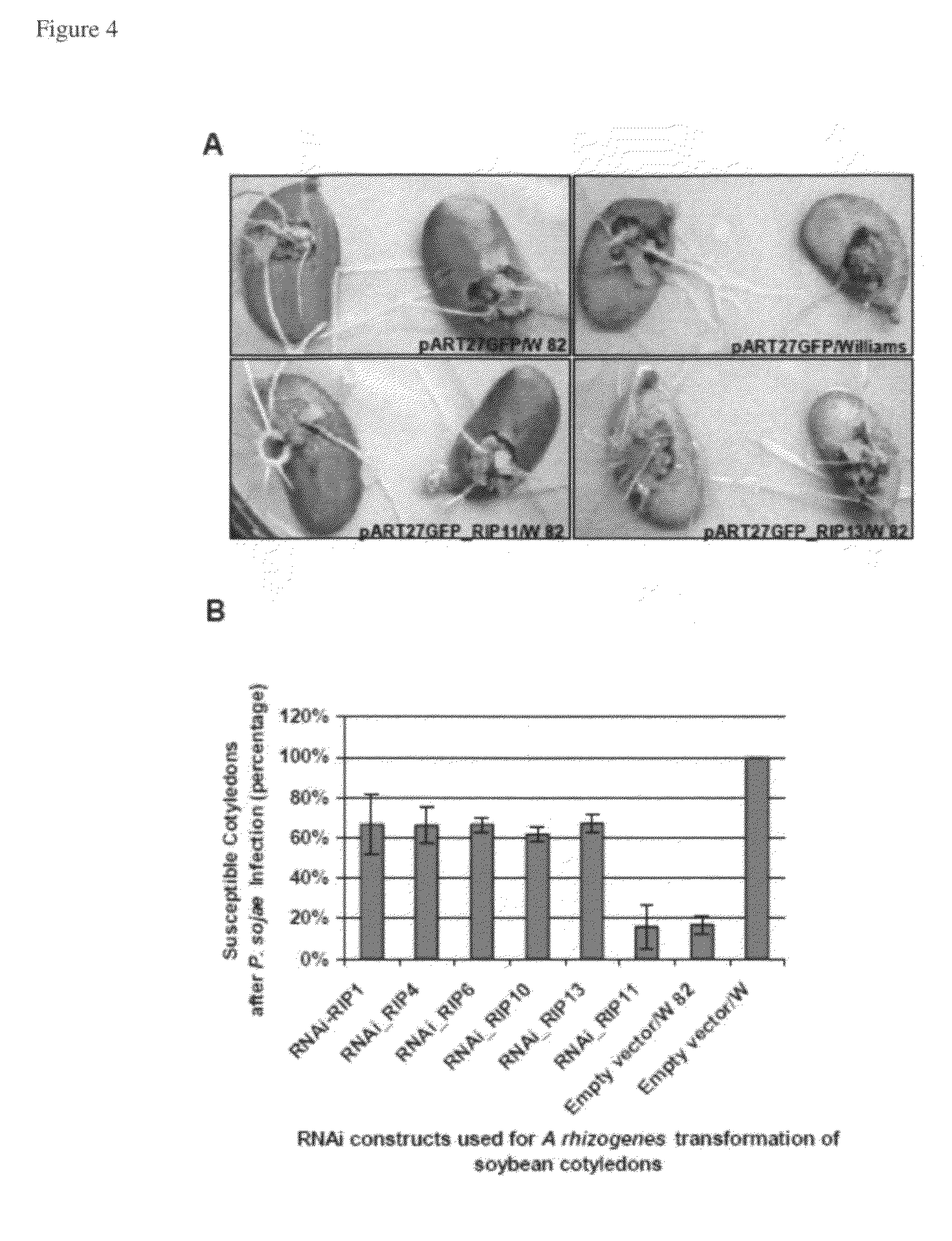Metacaspase II in engineering soybean for disease resistance
a technology of soybean and metacaspase, applied in the field of soybean genetics, can solve the problems of poor knowledge of the molecular mechanisms of r-avr protein recognition and downstream activation, and it is impossible to evaluate the effect of gene silencing on the expression of phytophthora /i>resistance in hairy roots
- Summary
- Abstract
- Description
- Claims
- Application Information
AI Technical Summary
Benefits of technology
Problems solved by technology
Method used
Image
Examples
example 1
Identification of Proteins that Interact with the Phytophthora Resistance Soybean Protein Rps1-k-2
[0149]In the United States, the annual soybean yield loss suffered from the root and stem rot disease caused by Phytophthora sojae is valued at about 300 million dollars. Very little is known about the signal transduction process involved in the expression of Phytophthora resistance in soybean. In order to identify signal transduction factors for Phytophthora resistance, a yeast two-hybrid system was applied using various baits derived from the soybean Phytophthora resistance protein, Rps1-k-2. Thirteen candidate signaling factors, interacting with Rps1-k-2 in vivo in yeast and in vitro, were isolated. RNA interference (RNAi) experiments were conducted to determine the possible roles of the Rps1-k-2-interacting proteins (RIP) in Phytophthora resistance. RNAi-mediated silencing of four putative RIPs, RIP1, RIP4, RIP6 and RIP13 resulted in loss of resistance against P. sojae. RIP1, RIP4, ...
example 2
[0243]We investigated (i) the nature of interactions between Rps1-k-2 and GmMcII (RIP13); (ii) steady state GmMcII protein levels following Phytophthora sojae infection. Results are briefly summarized below.
[0244](i) The Nature of Interactions Between Rps1-k-2 and GmMcII
[0245]To confirm the in vivo interaction between GmMcII and Rps1-k-2-CC in etiolated soybean hypocotyls, the fluorescence resonance energy transfer (FRET) technology was applied. In FRET, the transfer of energy from one excited donor fluophore to an acceptor fluophore indicates the extent of closeness between the two molecules. FRET can occur if the donor and acceptor fluophore pair is in a favorable orientation and in close proximity (in general <7 nm). FRET can be observed by exciting the sample at the donor excitation wavelength while measuring the fluorescence intensity at the acceptor emission wavelength (Truong and Ikura, 2001). The commonly used fluophor pair are cyan fluorescent protein (CFP) as the donor and...
PUM
| Property | Measurement | Unit |
|---|---|---|
| temperature | aaaaa | aaaaa |
| temperature | aaaaa | aaaaa |
| pH | aaaaa | aaaaa |
Abstract
Description
Claims
Application Information
 Login to View More
Login to View More - R&D
- Intellectual Property
- Life Sciences
- Materials
- Tech Scout
- Unparalleled Data Quality
- Higher Quality Content
- 60% Fewer Hallucinations
Browse by: Latest US Patents, China's latest patents, Technical Efficacy Thesaurus, Application Domain, Technology Topic, Popular Technical Reports.
© 2025 PatSnap. All rights reserved.Legal|Privacy policy|Modern Slavery Act Transparency Statement|Sitemap|About US| Contact US: help@patsnap.com



